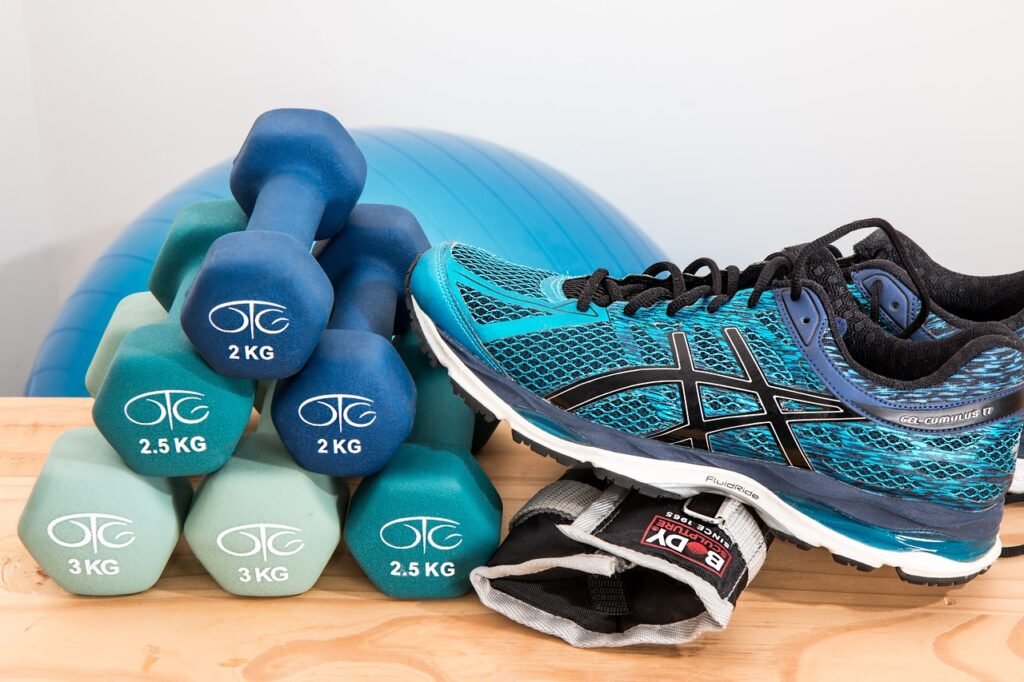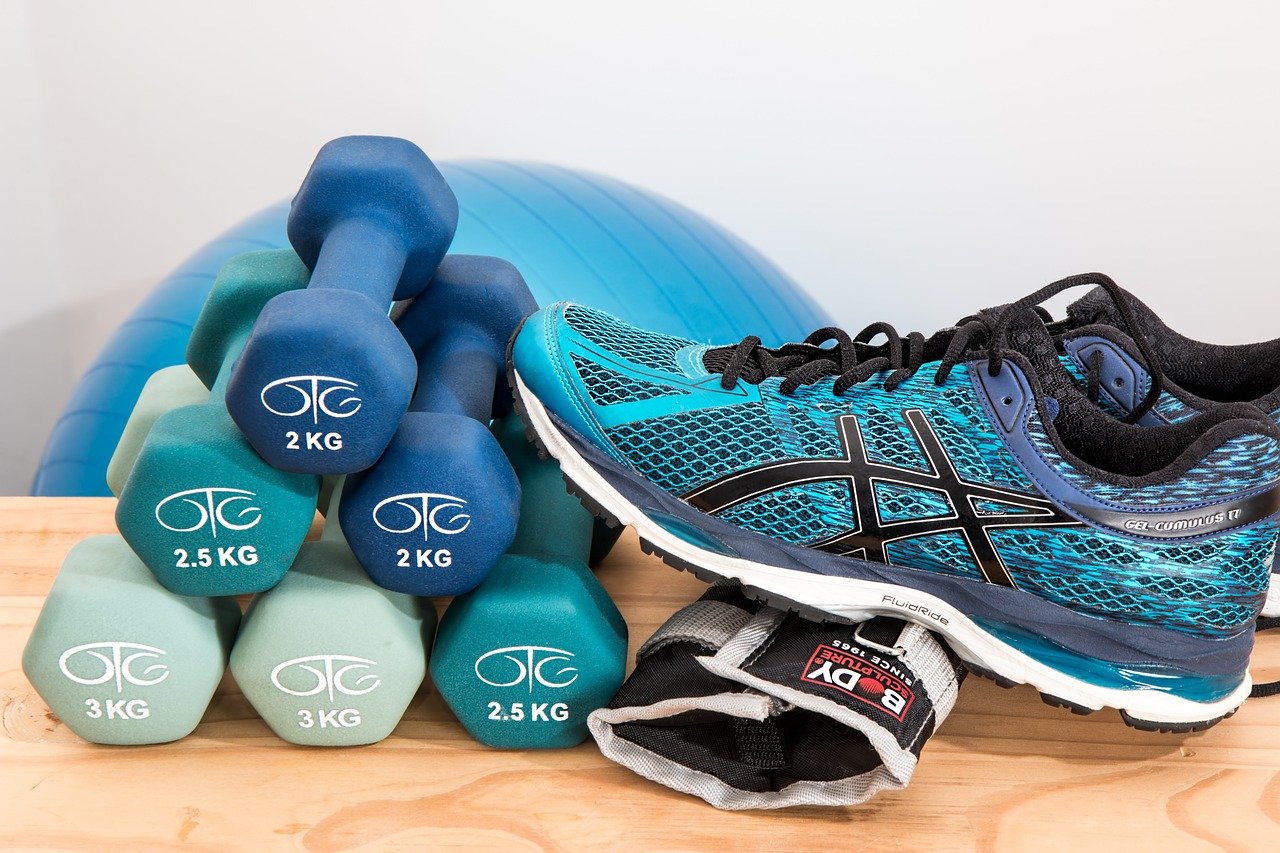Finding the right workout routine can be a challenging task, especially if you’re new to the gym scene. But fear not, because this article is here to guide you towards effective workout routines that you can easily follow at your local gym. With a variety of exercises and techniques, you’ll be able to target different muscle groups and achieve your fitness goals in no time. So grab your gym bag and get ready to sweat it out with these effective workout routines designed specifically for local gym-goers like yourself.

This image is property of pixabay.com.
Warm-up exercises
Before diving into intense workouts, it’s important to properly warm up your body. Warm-up exercises are essential for preparing your muscles, joints, and cardiovascular system for the workout ahead. There are a few key components to a good warm-up routine: stretching, cardiovascular warm-up, and activating major muscle groups.
Stretching
Stretching is a crucial part of any warm-up routine. It helps to increase flexibility and prepare your muscles for the upcoming workout. Focus on dynamic stretching, which involves moving through a range of motion rather than holding static stretches. Some effective dynamic stretches include arm circles, leg swings, and torso twists. Take your time with each stretch and never push yourself to the point of discomfort.
Cardiovascular warm-up
Getting your heart rate up is an important part of warming up for a workout. Cardiovascular warm-up exercises such as jogging in place, jumping jacks, or skipping rope can help increase blood flow to your muscles and elevate your heart rate. Aim for about 5-10 minutes of moderate-intensity cardio to get your body warmed up and ready for action.
Activating major muscle groups
Activating your major muscle groups is a great way to ensure they are properly engaged for your workout. This can be done through targeted exercises such as bodyweight squats or lunges. By doing a few sets of these exercises, you wake up your muscles and mentally prepare yourself for the upcoming workout. It’s important to focus on proper form during these activation exercises to prevent injury and optimize performance.
Strength training routines
Strength training is a crucial component of any workout routine. Building strength not only helps with overall fitness but also improves bone density and boosts metabolism. When it comes to strength training routines, it’s important to focus on both upper body and lower body exercises, as well as core exercises to ensure a balanced and well-rounded workout.
Upper body exercises
To target your upper body, incorporate exercises such as push-ups, pull-ups, and dumbbell curls into your routine. These exercises engage muscles like your chest, shoulders, back, arms, and even your core. It’s important to choose weights or resistance that challenges you but allows you to maintain proper form throughout the exercise. Start with a weight that feels manageable and gradually increase as you get stronger.
Lower body exercises
Building lower body strength is important for overall stability and power. Exercises like squats, lunges, and deadlifts are excellent for targeting your glutes, quadriceps, and hamstrings. These exercises can be done with weights or simply using your body weight. Focus on engaging your core and maintaining proper form throughout the movements.
Core exercises
A strong core is essential for stability and proper posture. Incorporate exercises like planks, Russian twists, and bicycle crunches into your routine to engage your abdominal muscles, obliques, and even your lower back. It’s important to remember that core exercises should be done with control and proper form rather than speed. Gradually increase the time or intensity of the exercises as you get stronger.

This image is property of pixabay.com.
Cardiovascular exercises
Cardiovascular exercises are great for improving heart health, boosting endurance, and burning calories. They can be done on various machines or by incorporating activities like running or swimming into your routine. Here are a few popular options:
Treadmill workouts
Treadmill workouts are a classic choice for cardiovascular exercise. Whether you prefer walking, jogging, or running, the treadmill allows you to control the speed and intensity of your workout. You can incorporate interval training by alternating between periods of faster running and slower recovery periods. Challenge yourself by tackling inclines or incorporating sprints into your routine.
Elliptical workouts
The elliptical machine provides a low-impact, full-body workout. It targets both your upper and lower body while minimizing stress on your joints. Utilize the various resistance levels and incline settings on the machine to customize your workout. Try incorporating interval training by alternating between high-intensity bursts and recovery periods.
Cycling workouts
Cycling is a fantastic cardiovascular exercise that works your lower body while providing a low-impact workout. Whether you choose a stationary bike or hit the open road, cycling allows you to control the intensity of your workout. Challenge yourself with uphill climbs or incorporate sprints for a high-intensity interval training session. Don’t forget to adjust your bike seat and handlebars to ensure proper form and prevent injury.
Functional training exercises
Functional training exercises focus on movements that mimic daily activities or sports-specific movements. They help to improve overall coordination, balance, and flexibility. Incorporating functional training exercises into your routine can enhance your performance in everyday activities and prevent injuries.
Balance exercises
Balance exercises are crucial for overall stability and coordination. Incorporate activities like single-leg stands, heel-to-toe walks, or Bosu ball exercises into your routine to improve balance and lower body strength. These exercises also engage your core, further enhancing your overall stability.
Flexibility exercises
Flexibility exercises help to improve your range of motion, prevent injuries, and reduce muscle soreness. Activities like yoga or Pilates are excellent options for enhancing flexibility. Stretching routines that target major muscle groups can also be incorporated into your warm-up or cool-down routine.
Coordination exercises
Coordination exercises challenge your brain and body to work together seamlessly. Incorporating activities like ladder drills, agility cone drills, or even dancing can improve your coordination. These exercises can be both fun and challenging, making your workouts more engaging.

This image is property of pixabay.com.
High-intensity interval training (HIIT)
High-intensity interval training, commonly known as HIIT, is a workout technique that alternates between intense bursts of exercise and short recovery periods. HIIT is an efficient way to burn calories, improve cardiovascular fitness, and build strength. Here are a few popular HIIT workouts:
Tabata
Tabata is a form of HIIT that consists of 20 seconds of intense exercise followed by 10 seconds of rest. This pattern is repeated for a total of 4 minutes. Tabata workouts can be customized to target various muscle groups or focus on cardiovascular endurance.
Circuit training
Circuit training involves performing a sequence of exercises back-to-back with minimal rest in between. This not only increases cardiovascular endurance but also helps to build strength. Design your own circuit by choosing exercises that target different muscle groups or join a circuit training class at your local gym.
Interval sprints
Interval sprints involve alternating between short bursts of all-out sprinting and recovery periods of slower-paced jogging or walking. This type of workout is excellent for improving speed, endurance, and burning calories. Choose a distance or duration for your sprints, such as running at maximum effort for 30 seconds, followed by 1 minute of recovery.
Group fitness classes
Group fitness classes are a fantastic way to stay motivated and break up the monotony of individual workouts. They provide a supportive and energetic environment, making it easier to push yourself. Here are a few popular group fitness classes you can find at your local gym:
Zumba
Zumba is a high-energy dance fitness class that combines cardio, strength training, and dance moves from various styles. It’s a fun and enjoyable way to get your heart pumping and burn calories. Zumba classes typically involve following the instructor’s choreography to lively music.
Spinning
Spinning classes involve cycling on stationary bikes in a group setting. They are led by an instructor who guides participants through various intensity levels and terrains. Spinning classes offer a challenging cardiovascular workout while minimizing joint impact.
Bootcamp
Bootcamp classes are intense workouts that combine cardio, strength training, and agility exercises. These classes typically involve a variety of bodyweight exercises, circuit training, and functional movements. Bootcamps provide a dynamic and motivating environment, pushing participants to their limits.
Bodyweight exercises
Bodyweight exercises require no equipment and can be done anywhere, making them a convenient option for busy schedules or when traveling. These exercises utilize your body’s weight to provide resistance and build strength. Here are a few effective bodyweight exercises:
Push-ups
Push-ups are a classic exercise that target your chest, shoulders, and triceps. They can be modified to suit different fitness levels by adjusting the difficulty or intensity. Start with traditional push-ups on your toes or modify by performing them on your knees.
Squats
Squats are a compound exercise that targets multiple muscle groups, including your glutes, quadriceps, and hamstrings. They can be done with or without weights and can be modified by adjusting the depth or intensity. Focus on maintaining proper form, with your knees tracking over your toes and your back straight.
Planks
Planks are an excellent exercise for strengthening your core and improving stability. They engage your abdominal muscles, lower back, and shoulders. Start with a forearm plank and gradually increase the duration as you get stronger. Ensure proper form by maintaining a straight line from your head to your heels.
Weightlifting exercises
Weightlifting exercises involve using external weights, such as dumbbells or barbells, to build strength and muscle mass. These exercises provide resistance that challenges your muscles and helps to promote growth. Here are a few effective weightlifting exercises:
Deadlifts
Deadlifts are a compound exercise that works your lower back, glutes, hamstrings, and core. They are a great exercise for building overall strength and stability. Start with lighter weights or use a barbell without additional weight until you’ve mastered the proper form.
Bench press
Bench press is a classic upper body exercise that targets your chest, shoulders, and triceps. It can be done with a barbell or dumbbells. Start with lighter weights and gradually increase as you gain strength and confidence. Focus on maintaining proper form and using controlled movements.
Barbell squats
Barbell squats are similar to bodyweight squats but involve adding additional weight with a barbell placed across your upper back. This exercise targets your lower body and core while adding more resistance to challenge your muscles. Start with lighter weights or a barbell without additional weight and gradually increase as you get stronger.
Flexibility training
Flexibility training is important for maintaining a healthy range of motion, preventing injury, and enhancing overall athletic performance. Incorporating flexibility exercises into your routine can improve posture, reduce muscle tension, and promote relaxation. Here are a few popular flexibility training options:
Yoga
Yoga is a mind-body practice that incorporates physical postures, breathing exercises, and meditation. It helps to improve flexibility, strength, and balance. There are various styles of yoga, ranging from gentle and restorative to more vigorous and dynamic. Find a style that suits your goals and preferences for a well-rounded flexibility workout.
Pilates
Pilates is a low-impact exercise method that focuses on core strength, stability, and flexibility. It involves precise movements that target deep muscles and emphasize control, alignment, and breath. Pilates can help improve overall posture, enhance body awareness, and promote a strong and flexible physique.
Stretching routines
In addition to dynamic stretching during your warm-up, incorporating targeted stretching routines into your workout can help improve flexibility. Focus on stretching major muscle groups such as your hamstrings, quadriceps, hips, shoulders, and chest. Hold each stretch for 15-30 seconds and avoid bouncing or forcing the stretch beyond your comfort level.
Cool-down exercises
The cool-down phase of your workout is just as important as the warm-up. It allows your heart rate to gradually return to normal and prevents blood from pooling in your muscles. Cool-down exercises can also help reduce muscle soreness and promote recovery. Here are a few key components of a good cool-down routine:
Static stretching
Static stretching involves holding a stretch in a comfortable position for a prolonged period, typically 15-30 seconds. This can help lengthen and relax your muscles after a workout. Focus on stretches that target major muscle groups and areas that feel particularly tight.
Foam rolling
Foam rolling, also known as self-myofascial release, involves using a foam roller to apply pressure to specific muscles to release tension and improve mobility. Spend a few minutes rolling over different muscle groups, paying extra attention to any areas that feel tight or sore.
Deep breathing
Deep breathing exercises can help you relax and transition from an active state to a more restful state. Take deep breaths in through your nose and exhale slowly through your mouth. Focus on slowing down your breathing and allowing your heart rate to gradually return to normal.
Incorporating these cooling-down exercises into your routine can help promote relaxation, recovery, and overall well-being.
In conclusion, effective workout routines at your local gym provide a multitude of options to enhance your fitness journey. From warm-up exercises to cooldowns, there are various exercises and techniques you can incorporate to target different muscle groups and improve overall strength, cardiovascular fitness, flexibility, and coordination. Whether you prefer strength training, cardiovascular exercises, functional training, HIIT, group fitness classes, bodyweight exercises, weightlifting, or flexibility training, there are endless possibilities to personalize your workout routine and achieve your fitness goals. Remember to always listen to your body, maintain proper form, and gradually increase the intensity of your workouts to avoid injury and ensure long-term success.
